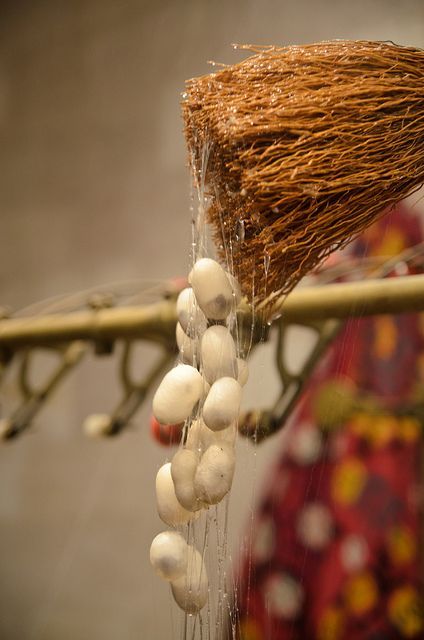
Silk is a natural fiber derived from the silkworm that feeds on mulberry leaves. Silk threads are protein fibers extracted from the silkworm's fluid. Silk has the most durable and flexible characteristics among natural fibers. In addition, the process of making silk fabric is very intricate and meticulous. Therefore, products made from silk have long been regarded as premium items in bustling markets.
The process of making fabric is intricate and meticulous: To create a complete piece of fabric, it must go through many different stages. From spinning the yarn to weaving, dyeing, and finishing, each step must be performed precisely to produce the perfect fabric. As we know, silk fabric is made from the threads of silkworms, and this process is both fascinating and labor-intensive for the artisans involved.
The number of cocoons per meter of fabric: Only those who work in the industry know that once the silkworms finish spinning their cocoons, the silk must be harvested within 5 days. If the process takes longer, and the silkworms turn into moths, the silk threads will lose their quality. As a 100% natural material, around 500 cocoons are needed to produce 1 meter of fabric. For thicker fabrics, it may require between 2,000 to 2,500 cocoons to make 1 meter of silk.
Weaving requires skilled artisans who have been trained for 10 to 12 years, and typically this craft is passed down through generations. To become proficient in the craft of silk weaving, one must have high-level skills and dedicate 10-12 years of training. “I started learning this craft when I was young, my mother taught me how to spin and weave. After getting married and having three children, they too would sit with me and my husband to spin silk after school hours. I still remember, from my generation to my three children, the countless times we were scolded for uneven or careless spinning. It was through these lessons that my skills improved so quickly,” said an artisan from the village.
How many meters of fabric can be woven in a day? Growing mulberry trees, raising silkworms, and obtaining silk threads for weaving already involves a series of intricate and complex tasks, requiring artisans to be patient and meticulous. When it comes to weaving, the process demands even more skill and craftsmanship from the artisans of Nam Cao village. After the silk is spun and wound into spools, it is thoroughly dried, then twisted, wound, and finally woven. Each day, a dedicated artisan works from dawn until late at night, only managing to weave 5-7 meters of raw silk fabric.
"I have dreamed, and today that dream has touched the hearts of others." That is the most sincere and profound feeling expressed by Founder Tam Do during the exhibition "Ancient Silk - Today's Soul," which recently concluded in March 2025 at the Interconnection My Dinh.